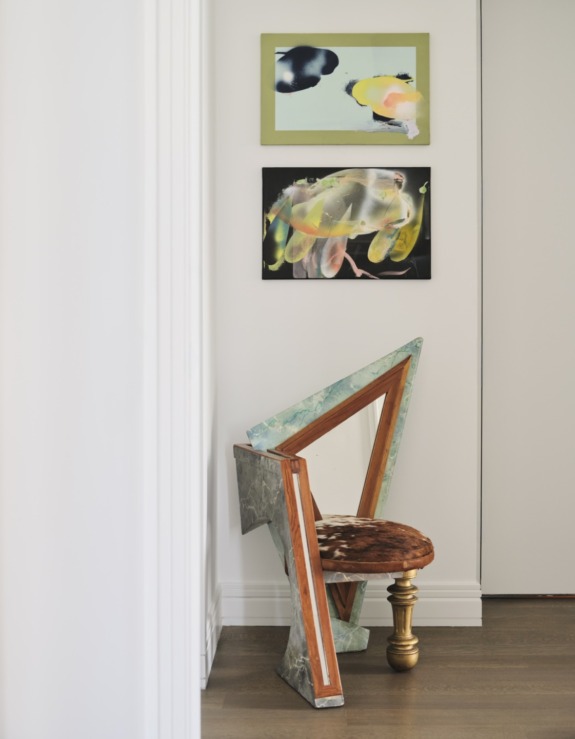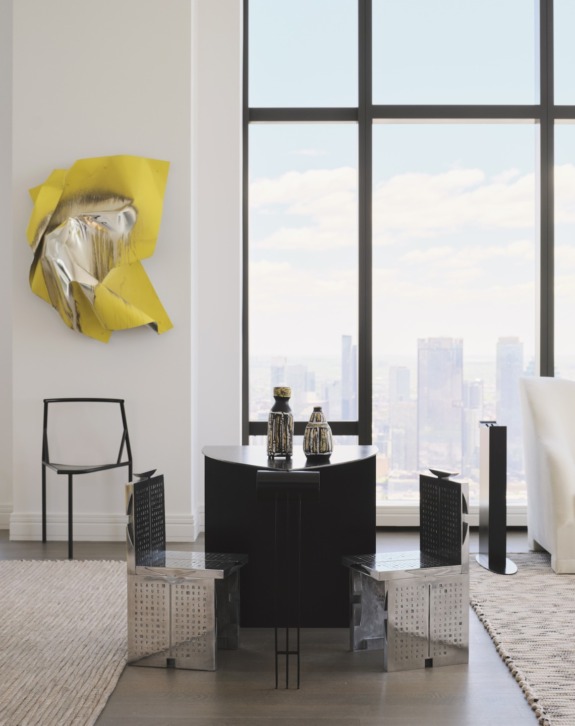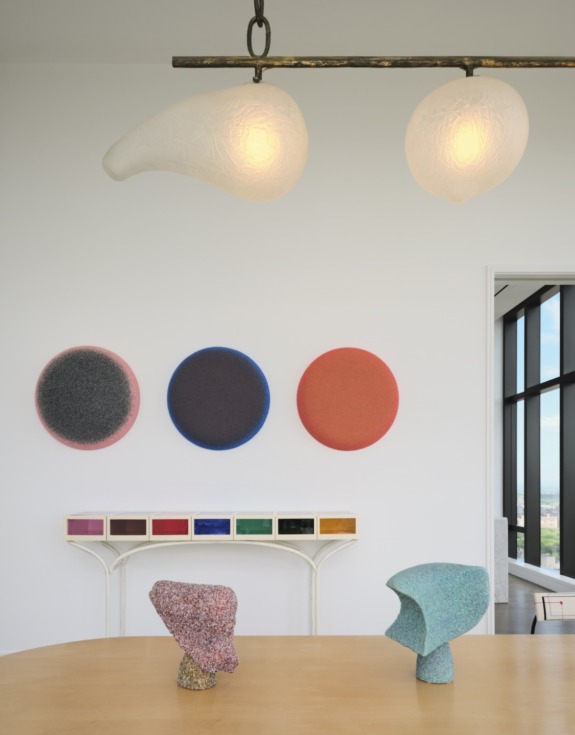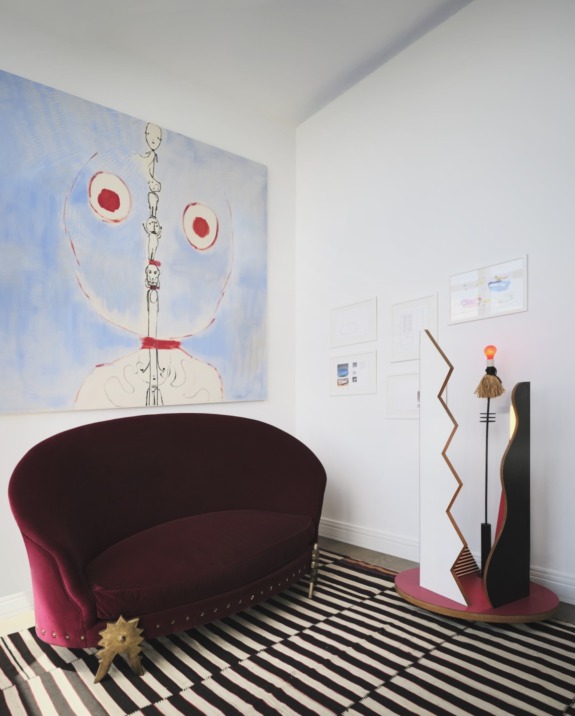Revisiting Néotù, the Pioneering Gallery That Made Furniture Emotional
A retrospective at Manhattan’s Galerie Gabriel revisits the boundary-breaking French dealer that made furniture weird, wonderful, and collectible

The notion of gallerists cultivating the mythos of artists they represent—market positioning, documenting exhibitions, developing narratives—may seem like standard practice now, but the approach wasn’t so definitive in the 1980s. Gérard Dalmon and Pierre Staudenmeyer, the enterprising duo behind legendary Parisian dealer Galerie Néotù, pioneered the newfangled (and arguably Postmodern) model when they entered the French decorative arts scene in 1984 by opening an intimate gallery near Centre Pompidou.
The trailblazers championed a talented coterie of designers who likened furniture as no less salient a creative medium than painting and a powerful conduit for emotional expression, among them Martin Szekely, Pucci de Rossi, Dan Friedman, and Patrick Naggar. Divergent aesthetics that pushed the status quo thrived—the gallery’s name is derived from néo-tout or “new everything”—and coalesced to stellar effect. Dalmon and Staudenmeyer savored the revelatory dialogues that unfolded within their walls.
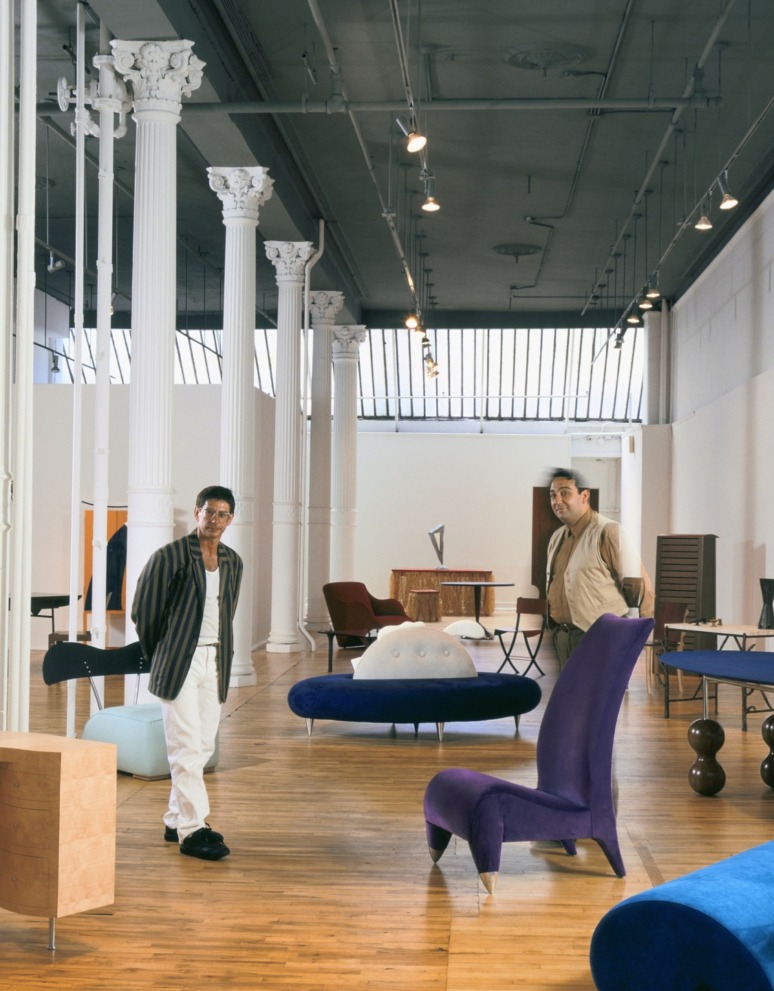
The duo’s approach proved particularly resonant when they opened a New York City outpost six years later, in a 3,200-square-foot industrial loft near SoHo’s Castelli Gallery, back when the neighborhood was a burgeoning enclave for avant-garde artists and blue-chip dealers. They inaugurated the gallery with a show dedicated to the surreal work of Elizabeth Garouste and Mattia Bonetti, and continued developing an idiosyncratic program that gradually revealed the “Néotù family of designers” over the next three years. That label grew to encompass American talents like venturesome husband-wife duo Godley-Schwan and even fashion titan Jean-Paul Gaultier, who entrusted the gallery with presenting his first and only furniture collection in 1992.
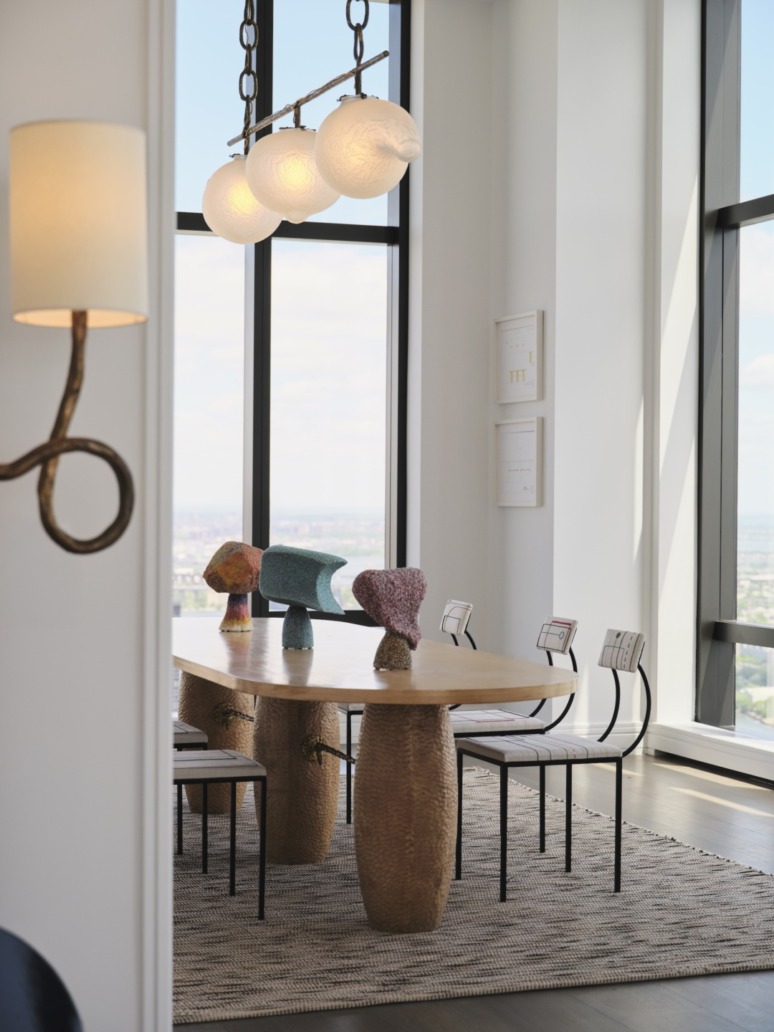
Even though Dalmon and Staudenmeyer passed the time dreaming up lavish interiors for starry clientele like rockstar Lou Reed, they couldn’t evade financial difficulty. Rising rents pushed Néotù to relocate nearby on Wooster Street, then to a townhouse on 44th Street, and later a loft on 34th Street before shuttering both its outposts altogether in 2001. During the gallery’s all-too-short lifespan, the duo mounted more than 100 shows that revitalized French design and introduced it to avid collectors on both sides of the Atlantic; published 850 boundary-pushing works of furniture, objects, and lighting; and nurtured Szekely, Barouste, Bonetti, Friedman, and dozens of contemporaries to fearlessly pursue their wildest creative visions with gusto.
Now, an outstanding exhibition in New York City is reigniting Néotù’s manifold achievements 35 years after Dalmon and Staudenmeyer first made their transatlantic journey. Curated by Sophie Mainier-Jullerot—a collaborator of Staudenmeyer and founder of Mouvements Modernes, which he founded the year after Néotù closed—and Galerie Gabriel founder Nancy Gabriel, “Néotù: The Visionary Years” scours the gallery’s rich inventory and assembles a retrospective of Néotù rarities that originally put the erstwhile venture on the collectible design map. The works, many sourced from private collections and never shown in the United States, are artfully arrayed in Galerie Gabriel’s soaring, light-filled penthouse atop Sutton Tower among contemporaneous paintings selected by art consultancy CMS Collection.
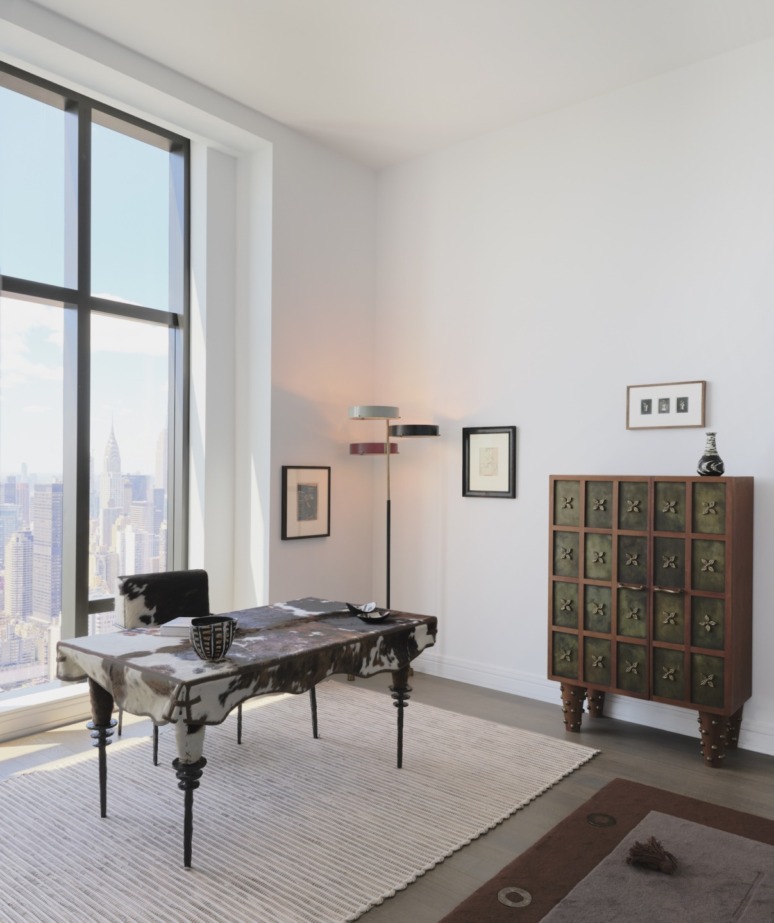
Curating the exhibition was a daunting task. Mainier-Jullerot and Gabriel undertook nearly a decade of intense research into Néotù’s archives. “What drew me to Néotù was its fearless energy,” Gabriel tells Galerie. “It wasn’t just a gallery—it was a provocation. Néotù broke conventions by fusing art, design, and daily life in a way that felt radically fresh.” They enlisted the curatorial eye of history-minded decorator and dealer Michael Bargo, a devoted scholar of French midcentury furniture as well as Ashley and Mary-Kate Olsen’s go-to designer for The Row’s tastefully pared-down showrooms; he turned out to be an ideal collaborator. “He intuitively grasped the essence of Pierre Staudenmeyer and the need to present his vision through a contemporary lens,” Gabriel continues. “There was a shared understanding from the start.”
That vision was about creative liberation and trusting one’s instincts—qualities that reverberate within and beyond the rarities on display. And there are many to behold. Perched in a corner is one of many off-kilter bookcases by De Rossi, the freewheeling artist of delightfully distorted, Dalí-indebted assemblages. Taking pride of place nearby is Garouste & Bonetti’s wild and witty Rodeo Desk and Armchair, a limited-edition pair that drapes tanned cowhides over futuristic wrought-iron forms like graduated discs above the legs. They have several other pieces on view, including a floral floor lamp whose gilded structure branches off into stem-like curlicues, a silvery freestanding wardrobe crowned with rows of what appear to resemble mounted bones, and a console with seven chromatic stained-glass drawers for obsessively organized dressers. An intriguing yet understated cocktail table by Friedman—who usually gravitated toward neon hues—layers teardrop-shaped MDF slabs atop two aluminum legs marked by orb-like protrusions.
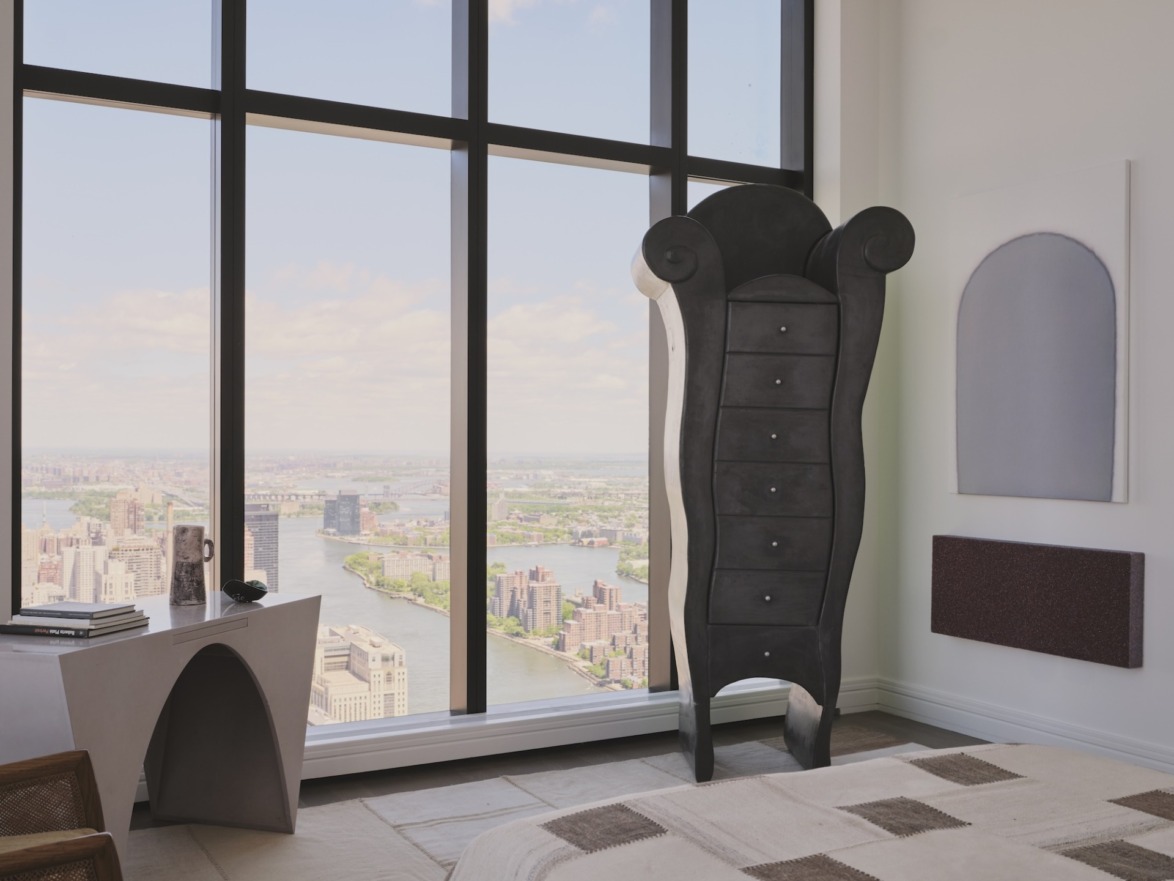
Gabriel and Bargo both want young designers and those previously unaware of Néotù’s legacy to feel emboldened by Dalmon and Staudenmeyer’s creative risks and how they continuously pushed its roster, especially emerging talents, to chart new artistic terrain. “Néotù marked a pivotal moment when design shed its utilitarian skin and embraced artistic expression,” Gabriel says. “It shifted our perception of objects from purely functional to emotionally and culturally resonant. I hope this show inspires a new generation to carry that spirit forward: to blur lines, redefine purpose, and speak boldly through their work, just as Néotù did in its time.”
“Néotù: The Visionary Years” will be on view at Galerie Gabriel (Sutton Tower: 430 East 58th St, 72nd Floor) until October 17.
